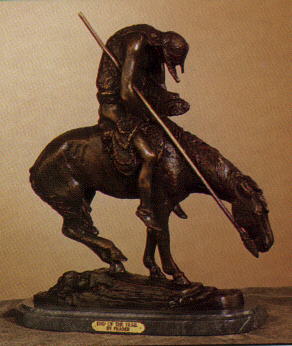I didn't know anything about it, so I looked it up. Here are the key lyrics:
Peter Gabriel Lyrics: "San Jacinto"
Around me--buffalo robe--sage in bundle--rub on skin
Outside--cold air--stand, wait for rising sun
Red paint--eagle feathers--coyote calling--it has begun
Something moving in--I taste it in my mouth and in my heart
It feels like dying--slow--letting go of life
Medicine man lead me up through town--Indian ground--so far down
Cut up land--each house--a pool--kids wearing water wings--drink in cool
Follow dry river bed--watch Scout and Guides make pow-wow signs
Past Geronimo's disco--Sit 'n' Bull steakhouse--white men dream
A rattle in the old man's sack--look at mountain top--keep climbing up
Way above us the desert snow--white wind blow
Wikipedia tells us:
This explores the contrast between the artificial world of Palm Springs and the Indian communities on the other side of the San Jacinto Mountains who have spiritual ties to the land.
Gabriel was influenced by an Apache Indian he met who told him of the ritual where the Medicine Man takes a young Indian boy to the mountains, allows a rattlesnake to bite him, and leaves the boy to find his way down the mountain, where he will either die or learn courage.
For starters, people seem to be guessing whether Gabriel was referring to the San Jacinto in California or Texas. I haven't seen a statement from him about which one he meant.
The mountain and desert imagery would argue for California, since the other San Jacinto is located in the flat, wet, southeastern part of Texas. The "Apache in the Midwest" story would argue for Texas, since the Apaches lived in Texas and Texas is in the Midwest.
A few people at SongFacts discussed this point:
I too am confused be the references to Southwest Indians and buffalo which were only hunted by the northern plains Indians, and held in especially high esteem by the Sioux.
I don't know why San Jacinto is the name used. Having just spent four days in the San Jacinto mountains and having lived in the Southwest for my childhood I can say with some certainty that the Apache are a not a Californian people and that Buffalo didn't live in the California deserts or mountains around San Jacinto. I don't think that Apache hunted Buffalo, either. Perhaps Peter Gabriel, a Brit, doesn't know his geography or his American First Nation peoples too well? Sounds like he's blending together a lot of peoples with the images and words he chooses.
So various lyrics seem to refer to the California desert, the Apaches' Texas homeland, or the northern plains where Sitting Bull and the Lakota lived. Can you say "mishmash"?
Rob's analysis
"Wakan Tanka" and the sweat lodge/buffalo robe imagery come from the Great Plains, but Gabriel sings as if the setting is the American Southwest. He's been watching too many Westerns set in Monument Valley, I think.
The in-town part is okay--perhaps derived from the actual San Jacinto, Texas. But it's a typical romanticized lament over the fate of the Indian. It's the aural equivalent of the End of the Trail statue:

White people have been crying over Indians for the last century, so this is nothing new. It's all part of the "vanishing Indian" syndrome. "Boo-hoo, my ancestors killed the Indians. Now I'll sing about it to show how much I care."
Meanwhile, Indian nations are growing and flourishing. While Gabriel was singing this live in 1986, Indians were about to win the Cabazon court case and become economic powerhouses through gaming. So the song is a gross distortion of Native reality.
Beyond the mishmash of images, the whole song is vaguely stereotypical--even if it's based on a true story. Indians do mystical ceremonies with medicine men...check. Indians cry over the loss of their land and culture...check. Indians are primitive people of the past who are lost in the modern world...check.
You can believe Gabriel wrote San Jacinto around 1980. It's a typical product of the more "sensitive" 1960s and 1970s. It acknowledges that Indians still exist, but that's about it. They're looking back, mourning their losses, not forging ahead via business, politics, and technology.
For another musical analysis, see Oldfield's Native-Themed Songs.

No comments:
Post a Comment
Note: Only a member of this blog may post a comment.